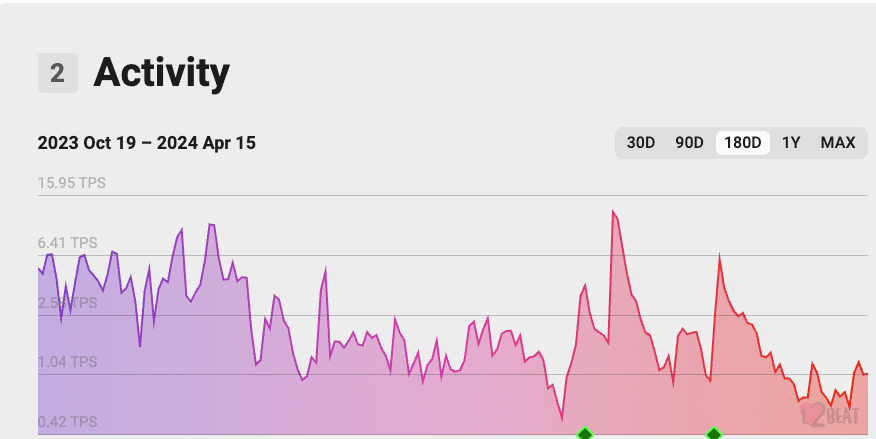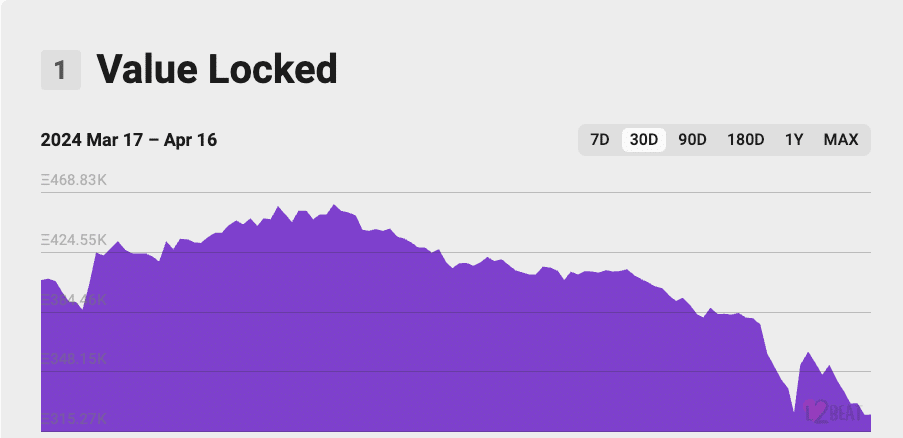Despite initiatives aimed at boosting network usage and slashing fees after Ethereum’s “Dencun” upgrade, Starknet has seen a notable decrease in user activity.
The dropoff for the Ethereum layer 2 follows its mid-February airdrop, with daily active addresses now averaging about 20,000, a significant drop from the over 100,000 active users recorded from August to December 2023. This decline in engagement comes on the heels of efforts to boost user activity, such as Starknet’s “DeFi Spring” program, intended to distribute 40 million STRK to participating DeFi protocols over six to eight months. But the move has yet to significantly impact network participation.
The airdrop sparked controversy over its eligibility requirements, particularly the stipulation that users needed to hold at least 0.005 ETH in their wallets on November 15, 2023. The requirement excluded many active users who had not met the ETH threshold, because they were focused on adding liquidity to decentralized exchanges on Starknet.
Community reaction has been mixed, with some users feeling unfairly left out of the airdrop — despite their contributions to the network.
The recent “Dencun” upgrade, which substantially reduced transaction fees on Starknet and many other Ethereum L2s, failed to revitalize network usage as much as some projections posited.
Data from L2BEAT shows that the network is currently processing around 1 transaction per second, while the historic average has been around 3 and 6 transactions per second, which speaks to a steep overall decline.

Moreover, the total value locked (TVL) measured in ETH has also been declining, falling from 450,000 ETH on March 29 to 330,000 ETH by April 16. The network TVL stands at $1.67 billion, but, notably, the STRK token makes up 85% of the total TVL.




